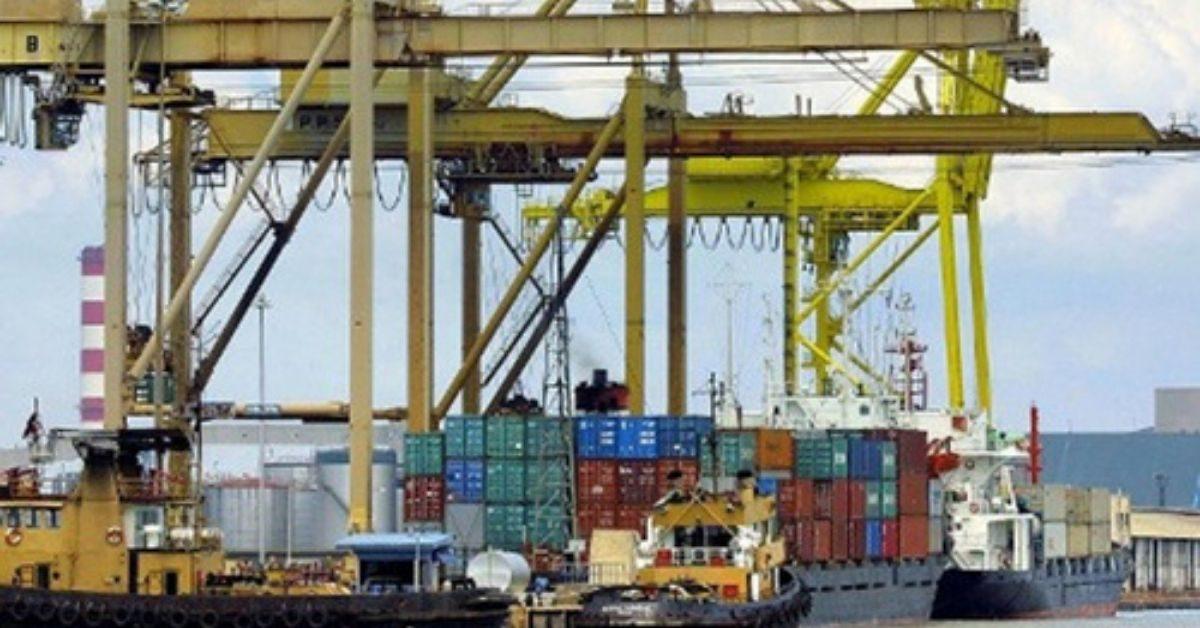The Karachi Port Trust (KPT) has finally increased its tariff after a staggering gap of 20 years. KPT says it has taken the decision amidst soaring costs of operations, maintenance, and modernisation; plummeting value of the Pakistani rupee; and the need to adapt to evolving market demands and address infrastructure challenges.
“These are applicable from July,” announced Shariq Farooqui, Public Relations Officer at KPT.
The tariff hike will affect the wet and dry charges for various services and commodities at the port. But what even are these charges, and how will they impact the port users?
What are wet and dry charges?
Wet charges are the fees that KPT levies for providing navigational services to the vessels that enter or leave the port. These include pilotage, port dues, and berthing. Pilotage is the service of guiding the vessels through the channel and harbour. Port dues are the charges for using the port facilities and infrastructure. Berthing is the charge for occupying a berth or anchorage at the port.
Dry charges are the fees that KPT levies for handling and storing the cargo that is loaded or unloaded at the port. These include wharfage, storage, and handling. Wharfage is the charge for using the wharf or quay for loading or unloading cargo. Storage is the charge for keeping the cargo at the port premises. Handling is the charge for moving the cargo within the port.
KPT’s claimed balancing act
While KPT concedes that the hike in dry charges may have marginal impact on certain sectors, it has endeavoured to minimise the burden on the general public. It has decided to either maintain or negligibly increase the tariff structure for commodities like edible oil, food, grain, wheat, flour, seeds, fertilisers, meal, pulses, poultry feeds etc.—essential goods that affect millions of people.
KPT has also slashed the tariff on transshipment through the Port of Karachi in order to lure more shipping activities and transform KPT into a modern transshipment hub.
What are the new costs?
The tariff hike will also affect the wet charges for vessels based on their gross registered tonnage (GRT). GRT is a measure of a vessel’s size and capacity—calculated by multiplying the volume of each enclosed space on a vessel by a factor based on its use.
KPT asserts that its wet charges were reduced in 2003, 2006, and 2010 when compared to 1994. The wet charges in the revised statutory regulatory order (SRO) 2023 are still less with respect to pilotage, port dues, and berthing when compared to 1994—even though inflation has skyrocketed. Further, it says that a new slab of GRT 45,001 to 90,000 have been introduced in port dues and berthing charges—while capping on vessels of over 90,000 GRT has also been included to mitigate their impact.
How much volume will be affected?
The tariff hike will affect a huge volume of cargo and containers that pass through Karachi Port every year. According to KPT’s statistics, in 2022-23, Karachi Port handled 41.85 million tons of cargo and 1.93 million TEUs (twenty feet equivalent unit) of containers—down from 51.71 million tons of cargo and 2.21 million TEUs of containers in 2021-22.
The breakdown shows that dry cargo import and export in 2022-23 was 30.63 million tons—down from 36.64 million tons in 2021-22. Similarly, liquid bulk cargo import and export in 2022-23 was 11.22 million tons—down from 15.07 million tons in 2021-22. The breakdown also shows that import cargo in 2022-23 was 29.08 million tons—down from 35.54 million tons in 2021-22. Similarly, liquid bulk cargo import in 2022-23 was 10.29 million tons—down from 14.07 million tons in 2021-22.
In addition, export cargo in 2022-23 was 12.78 million tons—down from 16.17 million tons in 2021-22. The container handling at Karachi Port, including all private container terminals, in 2022-23 was 1.93 million TEUs—down from 2.21 million TEUs in 2021-22. The breakdown shows that import containers were 0.97 million TEUs—down from 1.10 million TEUs in 2021-22, while export containers were 0.97 million TEUs—down from 1.11 million TEUs in 2021-22.
Irrespective of this decline, KPT stands to earn a pretty penny with the increase in the costs.
What is this revenue being used for? KPT says that the tariff hike will help it finance its future projects that are vital for enhancing its infrastructure and services. Some of these projects are a new multipurpose terminal at East Wharf, a deep water container terminal at Keamari Groyne, an expansion of cargo handling capacity at West Wharf, and an upgradation of security systems and equipment at the port.








